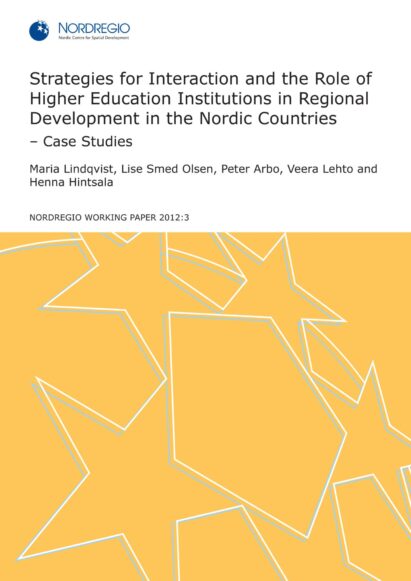This working paper presents eight case studies on Nordic higher education institutions (HEI) and their role in regional development.
The working paper is part of a project initiated in late 2009 and funded by the Nordic Council of Ministers. Focus of the study is on the various roles of higher education institutions (HEI) in regional development. The results are presented in a synthesis report Strategies for Interaction and the Role of Higher Education Institution in Regional Development in the Nordic Countries.
In this working paper, eight case studies of Nordic HEIs are presented. Focus has been on strategies and activities for external collaboration. The case studies have been selected to represent interesting examples of the role of HEIs in regional development. The following case studies were selected to include HEIs of different types and from different regions in terms of size and population density so as to offer a better understanding of the role of HEIs in different regional contexts:
- Aalborg University, the North Jutland region (Denmark)
- University of Iceland, Iceland and municipality of Hornafjördur (Iceland)
- Nordland University (former Bodö University College), Nordland County (Norway)
- University of Tromsö, the region of Northern Norway (Norway)
- Karlstad University, Värmland Country (Sweden)
- Royal Institute of Technology (KTH), Stockholm County (Sweden)
- HAMK University of Applied Science, region of Häme (Finland)
- University of Lappeenranta, region of Lappeenranta (Finland)
Examples of HEI collaboration in regional development
The case studies do not claim to be representative and the examples of regional collaborations are selected to illustrate a variation of activities rather than to identify best practice. Some of examples of interesting activities are the following:
- Problem-based learning and students projects in collaboration with businesses
- Demand driven education, vocational training and lifelong learning
- Matching supply and demand of competences
- Research collaborations projects
- Commercialisation and innovation support structures
- Participation in regional partnerships and dialogues
- Development and implementation of regional strategies
- Cluster development






